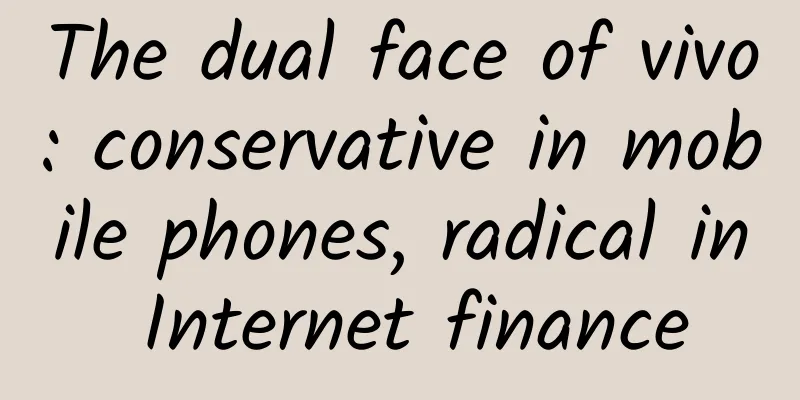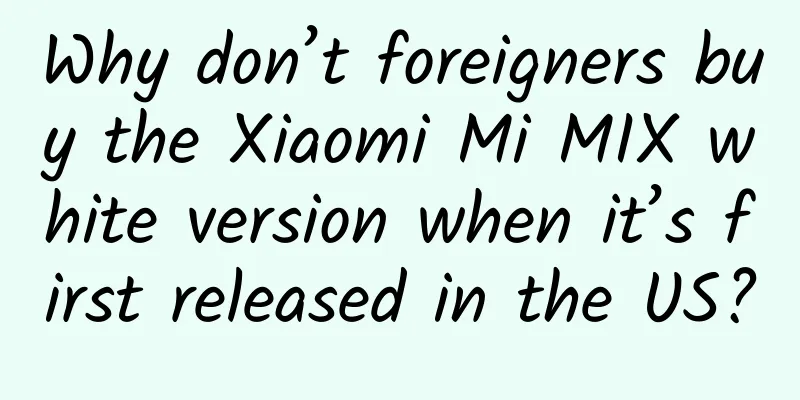The dual face of vivo: conservative in mobile phones, radical in Internet finance

|
In November 2011, three months after the release of Xiaomi 1, vivo launched its first smartphone, vivo V1. From that day on, this traditional feature phone manufacturer began its transformation into the field of Internet technology. Ten years later, vivo finally ushered in its own highlight moment. According to IDC data, in 2021, vivo shipped 71.5 million smartphones and had a 21.5% market share, ranking first among Chinese mobile phone manufacturers, leaving behind Huawei, Xiaomi, OPPO and other competitors. A year later, vivo once again retained the title with annual shipments of 53.161 million units and a market share of 18.6%, becoming China's most popular mobile phone brand for two consecutive years. In the context of the continuous decline in the mobile phone market, such achievements are certainly worth boasting about. You know, a few years ago, vivo was still labeled as "factory girl phone" and "IQ test machine". However, the sales volume is inversely proportional to the bottom line. The sales volume supported by low-end models obviously cannot support vivo's high-end dream. On the other hand, vivo's expansion strategy beyond mobile phones can also be said to be faltering. Faced with the already fiercely competitive folding screen mobile phone market, it was not until April 11, 2022 that vivo belatedly launched its first folding screen mobile phone, vivo X Fold; and with the ceiling of the mobile phone market already in sight, compared with Xiaomi and other friendly companies that crossed over early, vivo is obviously one step behind. Although vivo's own explanation is "dare to be the last in the world and strive to be the first among the last", whether it is a "pretext" for misjudgment or a "banner" for integrating internal ideas, vivo, which has always claimed to uphold the value of "duty", does not seem to be "duty". 01 vivo is not doing its job For quite a long time, Shen Wei has always adhered to some of the business ideas passed down by Duan Yongping during the BBK era. In December 2014, Shen Wei accepted a rare media interview. How rare? According to him, this was his first media appearance in 10 years. The reason for accepting the interview was simple: Shen Wei believed that consumers did not understand vivo enough. In this interview, Shen Wei revealed that Vivo has no intention of going public in the short term and does not need financing. Shen Wei explained that most companies go public to "get some money", but Vivo is not short of money. In fact, until today, there is no definite news about vivo's listing. However, the collapse of Henan Rural Commercial Bank, which involved 34 Internet financial platforms at once last year, brought out Vivo, which is said to look down on the act of "making some money". In September 2019, vivo officially launched the vivo wallet. Like other mutual finance platforms, the first function launched by vivo wallet was lending, and then it gradually added financial management, insurance and other sections. The cooperation between the mutual finance platform and the village banks is very simple. After the platform reaches an agreement with the village banks, the platform will list the deposit products, and the interest rates of these deposit products are usually much higher than those of the state-owned banks in the same period. High returns mean high risks. Under normal circumstances, it is difficult for depositors to feel comfortable depositing money in a village bank thousands of miles away. For people in the sinking market, the Vivo signboards that can be seen everywhere on the streets are undoubtedly a golden endorsement. Among the 34 third-party platforms exposed, vivo Wallet is not well-known, but the traffic brought by the hundreds of millions of terminal devices embedded with vivo Wallet is undoubtedly huge. "Shouting the most lofty slogans but doing the most shameless things" is the most appropriate description of the current Internet finance platforms. Take vivo Wallet as an example. It carries the banner of inclusive finance, but the most common complaints about vivo Wallet are abnormally high loan interest rates and violent debt collection. Vivo Wallet has two loan products, namely vivo loan and Weihui loan (dealer loan). Among them, vivo loan is for individual users, and its partners are Longxie Microfinance, JD Finance, 360 IOU, Du Xiaoman, Huanbei, Mashangxiaofei, Shengbei, and Zhongyou Consumer Finance; while Weihui loan is for vivo dealers, with a minimum annualized interest rate of 5.5%. According to public information, vivo's loan business is provided by Longxie Microfinance. In March 2020, OPPO and vivo jointly acquired "Longxie Microfinance". In June 2022, Longxie Microfinance's registered capital increased to 5 billion yuan, becoming the 10th online microfinance company with a registered capital of 5 billion yuan. It has been reported that the annual interest rates of self-operated loans issued by Longxie Microfinance are 13.18%, 19.77%, and 21.90% (some overdue cases), while Nanjing Bank, Zhongyuan Consumer Finance, etc. lend to users through vivo wallets, with annualized loan rates of 23.76% and 35% respectively (some loans issued in 2021). If you search the keyword "vivo" on the Black Cat complaint platform, you will find that unlike other consumer electronic products, in addition to product quality issues, shopping platform sales rules and after-sales related complaints, complaints about vivo wallets such as violent debt collection, high loan interest rates, and failure to receive recharged phone bills are also the hardest hit areas of complaints. Regarding the high interest rate of loans, many users complained that the annualized interest rate of vivo wallet loans is 34.675%, far exceeding the annualized interest rate stipulated by the state, and called it usury. Another user said that he signed a contract with the official vivo wallet, but a third-party contract came out, pointing out that the vivo wallet platform has a yin-yang contract. According to a previous article titled "Annual interest rate of 35%? Do you dare to use vivo wallet?", Mr. He from Hunan applied for a one-year loan totaling more than 2,800 yuan in three installments through the vivo wallet that comes with his vivo phone. During the period, he encountered a series of unexpected problems, including the disappearance of the loan agreement, the inexplicable change of the lender, and the annualized interest rate of the loan changing from 24% to 35%. In the case of village banks, the performance of "vivo" is even more surprising. Village banks solicit deposits from other places through the Internet platform, which has obvious compliance loopholes. However, vivo still acts as a channel and participates in it. It took years for the remnants of the P2P financial crisis to be eliminated, but Vivo still went ahead against the wind, which either means that it has no risk control system and zero compliance awareness. Or, people die for money and birds die for food, and they are willing to take this risk for high profits. At the vivo 2022 online annual meeting and innovation awards ceremony, Shen Wei mentioned cause and effect again. He delivered a speech titled "Focus on Planting Causes, Long-lasting Foundation", saying that 2022 is vivo's "year of high-end breakthrough". Only by adhering to long-termism and focusing on "planting causes" can the foundation be long-lasting. He is happy to use cause and effect and long-termists to define his and vivo's philosophy of life. However, from the facts, vivo is not as indifferent as Shen Wei claimed to the outside world. Logically speaking, vivo is not short of money and despises those companies that want to "make some money". The "vivo wallet" should have higher aspirations. Ironically, it ended up being just one-thirty-fourth. 02 vivo’s one main line and two contradictions Unlike its bold attempts in the Internet finance platform, vivo appears to be very conservative in its core mobile phone business. In the early days of the rise of domestic smartphones, all manufacturers were obsessed with differentiating their own positioning. For example, Huawei used its authority in the communications field to establish a "technologically hardcore" image, Xiaomi used the extreme cost-effective model to make a large number of Mi fans pay for "sentiment", and Lenovo tried to use the brand potential of the PC era to replicate the glory of the mobile era. But when it comes to vivo, it seems that there are not many new stories to tell. If we analyze the methodology of vivo's quiet rise, we can see that there is no overly high-sounding strategic planning. In vivo's official words, it is to meet the actual needs of users with "design drive" and make users feel "once used, it is hard to go back." This strategy is very flattering, but also very practical. Driven by the "design-driven" values, vivo has also begun to show its technological background, continuously strengthening its talent reserves in 5G, design, AI, imaging and other fields, and expanding its own underlying capabilities. For example, it launched the simpler and more reliable OriginOS Ocean mobile phone operating system and independently developed professional imaging chips V1 and V2, gradually transforming from an "idol" to a "real power". Public information shows that before 2014, vivo was just a marginal brand in the Chinese smartphone market; by 2015, vivo smartphone sales exceeded 35 million units, ranking fourth among domestic mobile phones; after vivo took the top spot in sales in the Chinese market in 2021, it has been at the top of the industry pyramid. But if we look at it in detail, vivo's sales volume is largely supported by the strategy of flooding the market with products, which is actually contrary to its obsession with high-end products. In 2022, vivo and its sub-brand IQOO released a total of 45 mobile phone models, with new models launched almost every month. Among them, vivo's main brand has 30 models and iQOO has 15 models. In 2021, there were 49 models. In comparison, Xiaomi, Redmi and Black Shark released a total of 25 mobile phones, Honor released 23 mobile phones, OPPO released 21 mobile phones, and Huawei only released 12 models. The other side of the coin of high shipment volume is the inverted profit margin of mobile phones. Last year, a big V complained on Weibo: In 21 years, vivo sold 71 million mobile phones in China, with a revenue of 143.3 billion yuan, but the profit accounted for only 7.4%. Apple sold 50.3 million mobile phones, with a revenue of 329 billion yuan, and a profit share of 67.8%, with a net profit margin of 20%. In the same market, vivo sells the most, but the profit is several times less than Apple. From the perspective of promoting high-end development, vivo's actions have been somewhat bumpy, and the most important thing is that it seems that it has never found its "backbone". In 2013, vivo officially established the Xplay series as its high-end flagship model. However, only three years later, there was no news about the Xplay series. In June 2018, the new product NEX series replaced Xplay as vivo's main force to enter the high-end market. Unfortunately, the NEX series came to an abrupt end after only launching 4 models, and the release of new models will always remain in March 2020. In addition, the sub-brand iQOO, which was born in March 2019, also carries vivo's ambition to impact the high-end market, but since iQOO focuses on the field of gaming and e-sports, it is inevitable that there will be great limitations. Nowadays, the model that can truly carry the high-end banner of vivo is still the X series. In September 2021, the release of the vivo X70 equipped with vivo's self-developed imaging chip "V1" caused quite a stir. The X90 series, which was launched in November last year, is equipped with its latest V2 chip, revealing vivo's ambition to move towards the high-end. However, the overall trend of the mobile phone market gradually entering a stock market is almost irreversible. If vivo wants to remain invincible under such circumstances, it needs to continuously expand its business boundaries. Just like Duan Yongping, vivo founder Shen Wei believes in the philosophy of "daring to be the last in the world", but from actual performance, this is not an enterprising idea. On the one hand, when major mobile phone manufacturers such as Xiaomi and Huawei are accelerating their pace to seize the IOT beach, vivo, which has more than 280 million active online users, entered the IOT field relatively late. Although vivo's IOT exploration began in 2018, which is not far from OPPO in terms of time node, its strategic advancement seems a bit conservative. It was not until August 21 that it proposed the "1+3+N" strategic layout. It is necessary to fill this ecological shortcoming as soon as possible. Even though vivo Vice President Hu Bashan believes that some previous technologies in photography, lifting camera, etc. are short-term tracks, vivo's technology research and development should bet more on long-term tracks such as chips. In fact, vivo's chip layout is not only several years later than Huawei and Xiaomi, but also much slower than its fellow OPPO. In 2021, Vivo established a central research institute, and Hu Bashan personally led the team to conduct long-term exploration in four areas: including cutting-edge technologies at home and abroad, product research and incubation in future technology scenarios, platform and capability building (such as chips, systems), and consumer scenarios (such as human-computer interaction). Influenced by the US's warning, Hu Bashan made it clear in an interview: Even with a large investment in SoC, it is difficult to bring about differentiated advantages, and Vivo will not intervene for the time being. All of Vivo's chips are ISP chips. It is reported that unlike OPPO, the cautious vivo chip team has only 200 people. In 2021, it was reported that Executive Vice President Hu Baishan had determined the boundary of not tape-out internally. An insider revealed that vivo originally planned to make chips as high-profile as OPPO, but due to changes in the external environment, it clamped its tail. Therefore, up to now, the two generations of chips V1 and V2 launched by vivo are both used to improve imaging technology. In September 2021, vivo's first self-developed imaging chip V1 was officially unveiled, a professional imaging chip serving high-speed computing imaging; on November 10, 22, vivo released the second-generation self-developed imaging chip V2, which mainly upgraded the on-chip memory unit, AI computing unit, and image processing unit. However, whether it is focusing on the IOT field or actively making chips, it is inseparable from the support of hard-core technology. Vivo has gradually become the leader of China's mobile phone industry from a marginal enterprise. It is needless to say that it has accumulated a lot of technological strength in the process. However, it is undoubtedly a foolish dream to want to get rid of the current low-end label with only a few years of hard work. From focusing on marketing to focusing on R&D and building an ecosystem, Vivo wants to become the next "Huawei" by replicating the "Huawei path". This path itself is feasible, but the energy and financial resources required are also huge. Whether Vivo can continue to invest until it bears fruit is a test. 03 Conclusion vivo always adheres to the strategy of "daring to be the last in the world", which makes its R&D and high-end products slower than other brands, and also forces vivo to use the strategy of flooding the market with products to make up for it. The reasons are not difficult to understand. On the one hand, even if vivo launches a saturation attack in the mid- and low-end mobile phone market, it has not yet established a high enough industry barrier, and its temporary sales volume is not sustainable. On the other hand, in the special period when Huawei encountered a chip supply cut and its sales volume was greatly reduced, any powerful friendly competitor could quickly take over the blank market vacated by the former by relying on its supply chain, brand and other advantages. In January this year, Shen Wei said at vivo's internal annual meeting, "In the next three to five years, the smartphone industry will face a relatively severe situation. The competition for corporate development is the ability to operate steadily and the ability to 'make fewer mistakes and do more right things'." However, is vivo's approach of being too conservative in some businesses and too aggressive in others "wrong" or "right"? Perhaps Shen Wei has always had the answer in his mind, but he just doesn't have a solution. *The title image and accompanying images in the article are from the Internet. As a winner of Toutiao's Qingyun Plan and Baijiahao's Bai+ Plan, the 2019 Baidu Digital Author of the Year, the Baijiahao's Most Popular Author in the Technology Field, the 2019 Sogou Technology and Culture Author, and the 2021 Baijiahao Quarterly Influential Creator, he has won many awards, including the 2013 Sohu Best Industry Media Person, the 2015 China New Media Entrepreneurship Competition Beijing Third Place, the 2015 Guangmang Experience Award, the 2015 China New Media Entrepreneurship Competition Finals Third Place, and the 2018 Baidu Dynamic Annual Powerful Celebrity. |
Recommend
Hiss! Burned by the hot pack again? We did an experiment to reveal the truth about the burns caused by the hot pack!
Every winter, we always see a lot of news about p...
iOS 9 Human Interface Guidelines: UI Design Basics
1.1 Designing for iOS iOS embodies the following ...
Using coroutines in Android development | Getting started guide
Continuing from the previous article "Using ...
Google Play enters China, starting with serving Chinese developers
December 10th may be a day worth remembering. On ...
Japan successfully tested microwave wireless power transmission: developing space solar power generation
The Japan Aerospace Exploration Agency (JAXA) suc...
Big but not strong, China's new energy vehicle industry faces multiple risks
China's production and sales of new energy ve...
Rest of World: BYD will lead Tesla in ten markets by October 2024 with its low-priced models
Recently, Rest of World reported that BYD has gai...
Ximalaya FM Product Experience Analysis Report (Part 2)
As the largest audio platform in China, Himalaya ...
How to learn English? Zhou Bangqin's "Follow Friends" 100 days to speak English easily
Training course content: In fact, most people wil...
Implementing user-unaware background crash handling in Android
As the saying goes, if you want to have no bugs, ...
Dislocated joints due to yawning, broken bones due to going to toilet, why are contemporary college students so "fragile"?
Audit expert: Wu Xinsheng Deputy Chief Physician ...
Li Xingxing: Practical Editing Training Camp
Li Xingxing: Editing Practice Training Camp Resou...
How many of the “Ten Don’ts” of Product Operations have you committed?
When doing product operations , we have listened ...
Does laundry detergent also contain carcinogens? Take a quick look at the ingredient list of the one you are using...
Laundry detergent is a detergent that is often us...
The tragedy of Renren Games: How a gaming company once worth 10 billion yuan was ruined
Tencent is undoubtedly the current leader in the ...









